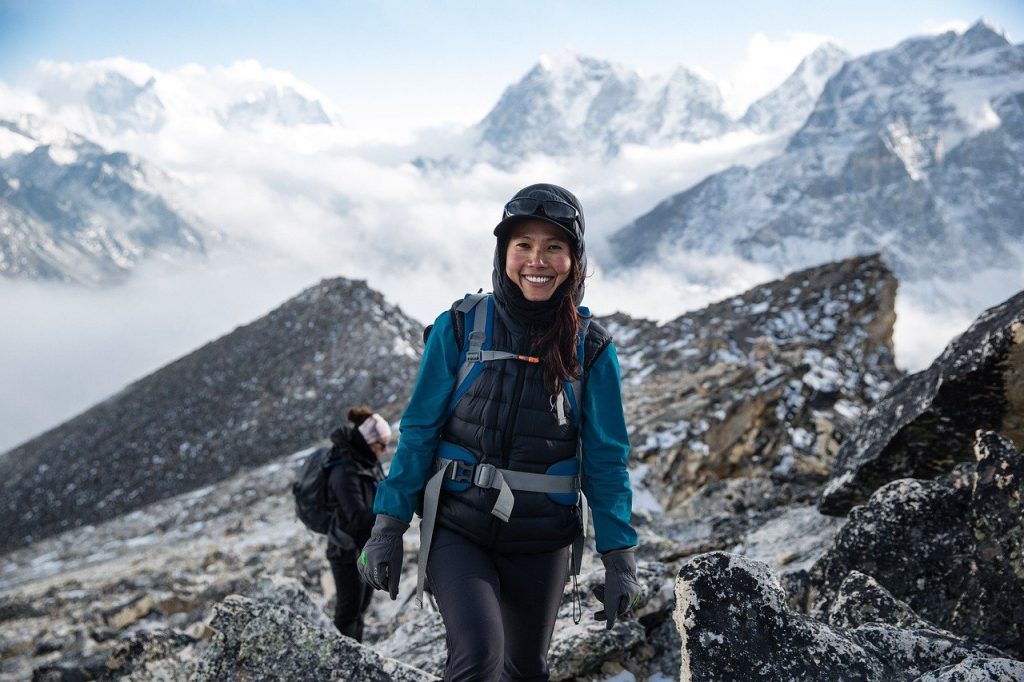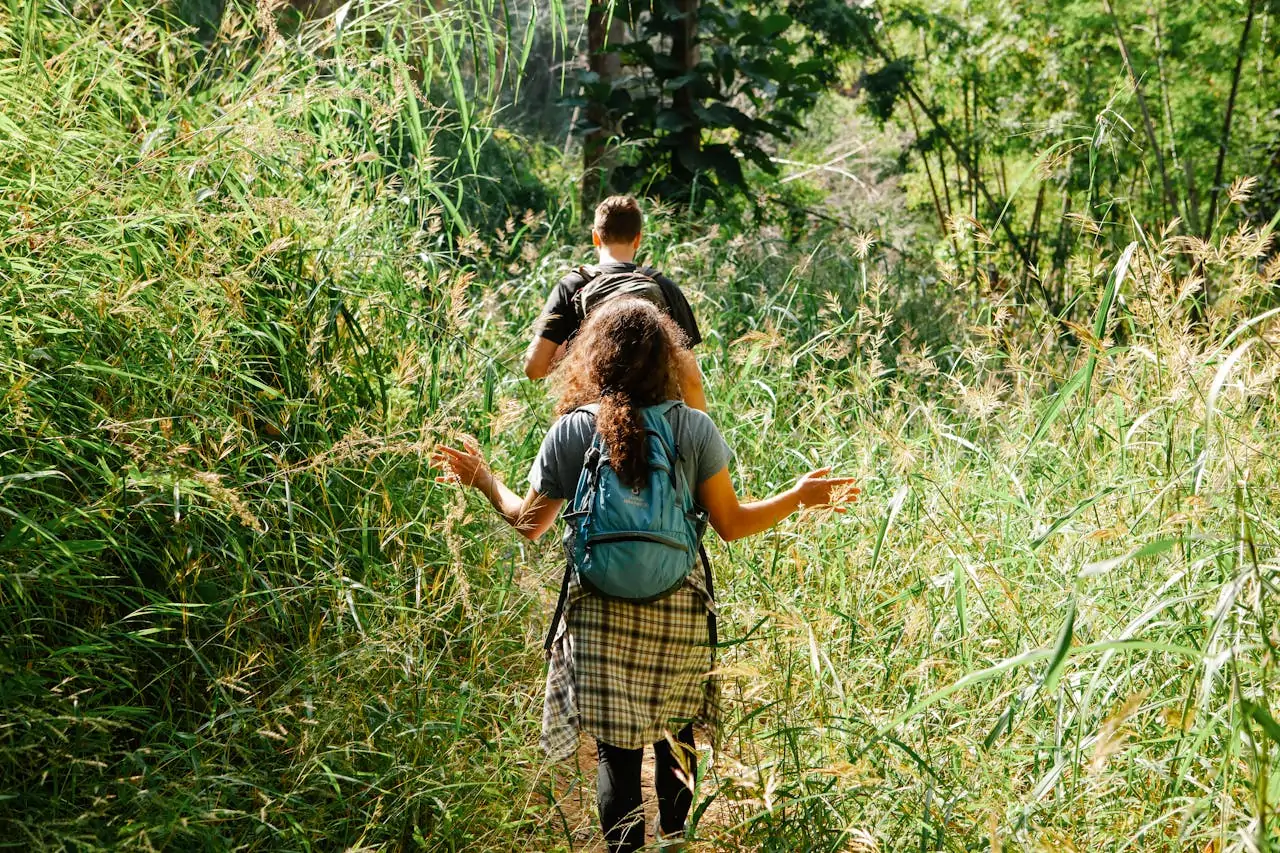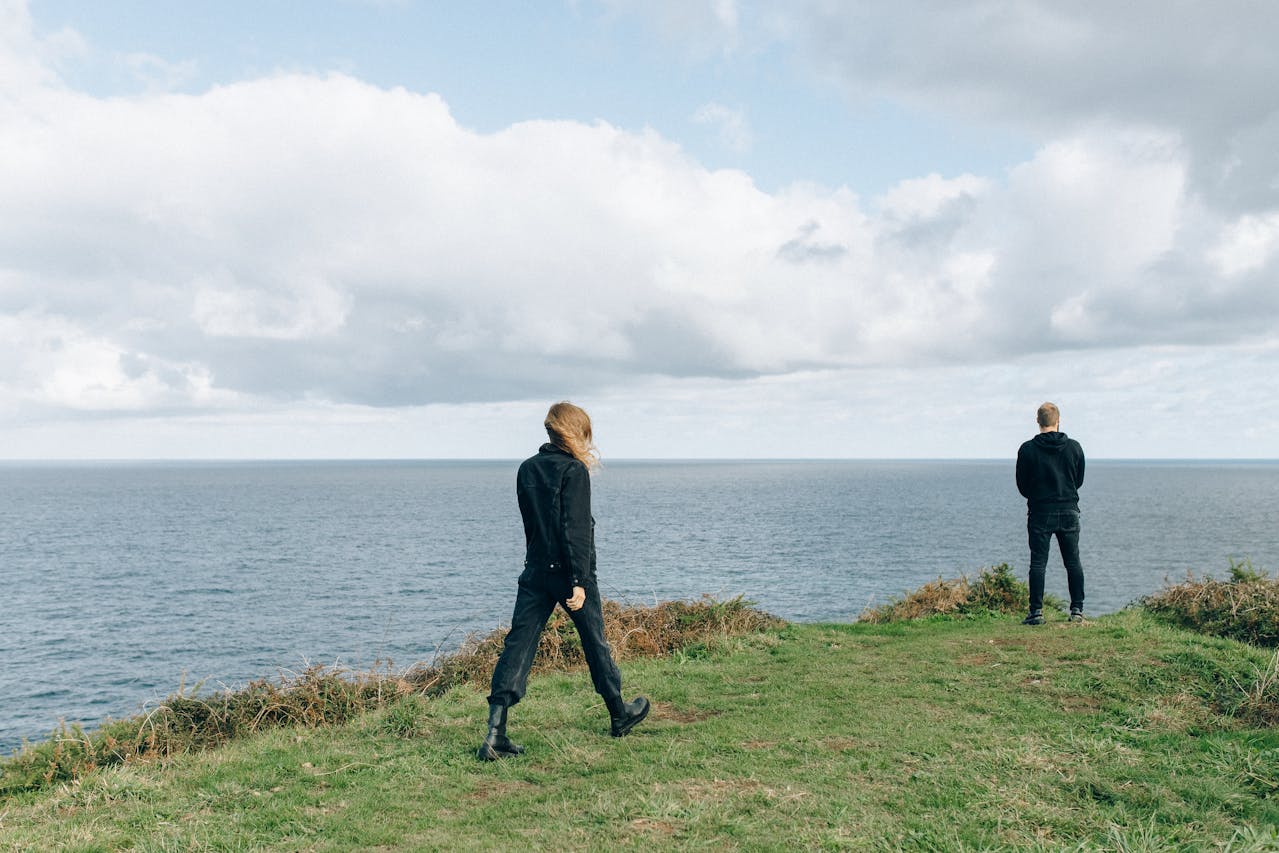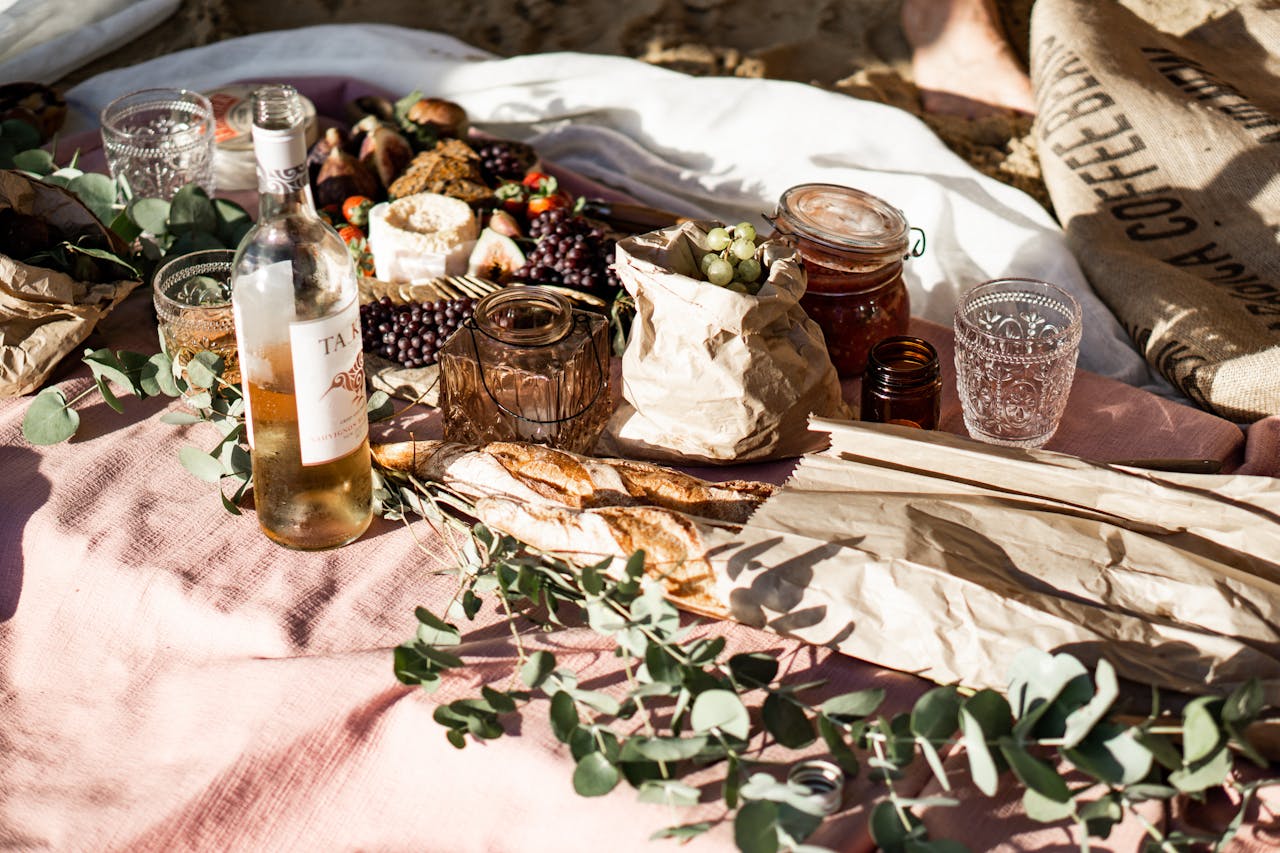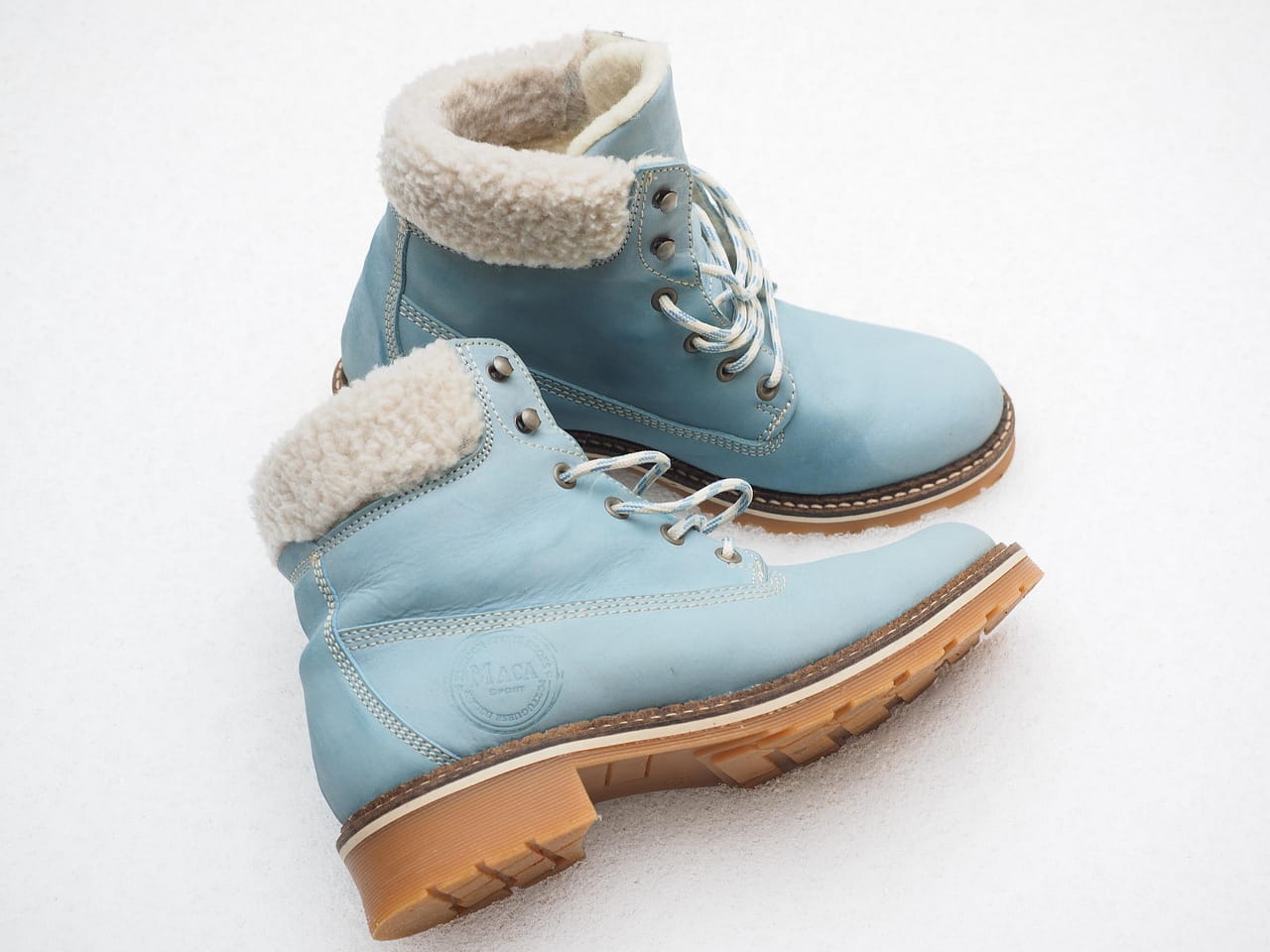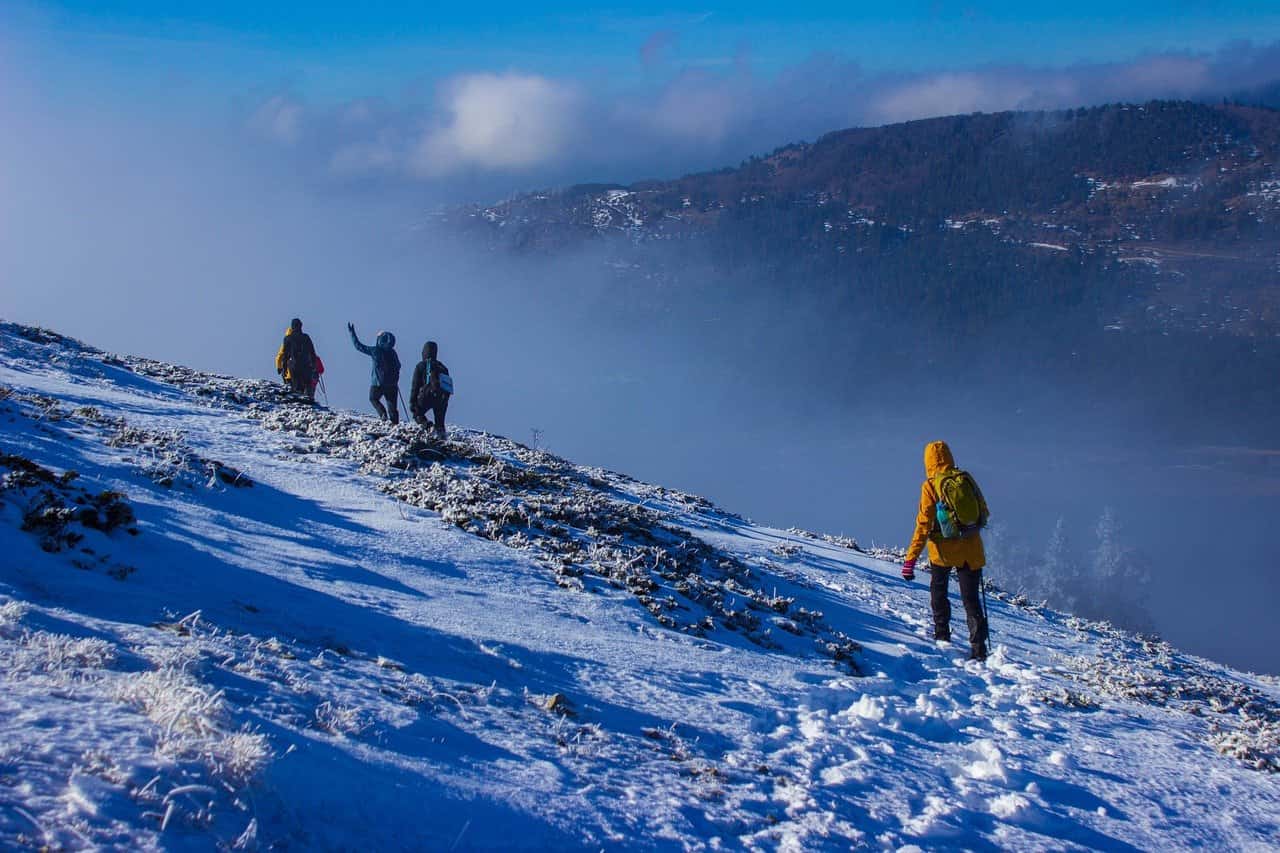Hiking in winter is difficult because the days get shorter and colder, Finding the motivation to go outside can be hard. In winter, it’s more challenging to head outdoors than it is during the warmer months when you can just put on your shoes and go for a walk.
However, with a change in how you think and these winter hiking tips, hiking in winter can be a lot of fun and can even help you feel happier and healthier.
After spending the last seven winters in Utah, I’ve found that winter hiking is a great way to stay active and healthy during the colder months when I might otherwise want to stay inside and watch TV.
Whether you love winter or not, I want to help you feel confident about getting outside and enjoying all four seasons. Here are my best tips and gear recommendations for winter hiking so you can stay active and enjoy the snow!
Don’t Make Winter Your Off-season
Has the cold ever made you hesitate about winter hiking? Maybe just thinking about freezing toes gives you the shivers?
For me, when the days get colder and shorter, I often start to feel the winter blues. I find myself spending more time indoors, eating holiday treats, and either dreaming about my next summer adventure or remembering past ones.
For years, I avoided winter hiking. When I was diagnosed with Raynaud’s Syndrome—a condition that makes fingers and toes go numb and change color in the cold—I thought my days of mountain climbing were over. The sharp pains and the strange skin discoloration made me want to avoid winter altogether.
But as I got more experienced in mountaineering, I learned how to handle the cold better. I figured out how to layer clothes properly, stay warm during breaks, and use things like hand warmers and thermoses to keep the cold at bay.
Now, winter hiking has become the perfect cure for those restless days. There’s nothing quite like the crisp air, the sunshine, and the amazing views from snowy peaks to lift your spirits and keep your body healthy. I’ve realized that my adventures don’t have to end just because it’s winter—they’re just beginning! I hope these tips can help you enjoy winter hiking too.

Prepare for Hike in Winter
Hiking in winter takes more preparation than hiking in warm weather. The days are shorter, and sometimes the roads that lead to the trails are closed or not maintained, making the hike longer.
Once you’ve picked a good winter hiking trail, you need to find a time when the weather is dry. Getting wet in freezing temperatures can be dangerous. I like to check several different weather apps to get the most accurate forecast. It’s also important to look at both the temperature and wind chill. A mild 38-degree day can feel much colder if there’s a strong wind.
If the trail has a steep climb or there’s been heavy snow, I always check the avalanche forecast. NOAA is a popular app for checking weather and avalanche conditions. To stay safe in areas where avalanches might occur, it’s a good idea to take an avalanche safety course.
Most importantly, winter hiking requires you to be flexible. You don’t have to cancel your hike if there’s a little rain or snow, but you need to know your limits. If the weather gets worse, be ready to end your hike early or plan it for another day.
Gear List for Winter Hiking
Staying warm while winter hiking means wearing a lot of clothes. Since I don’t handle the cold well, I can’t pack super light. Instead, I bring extra clothes, even if it adds a bit more weight to my backpack.
Layering Is Key
There are three main layers you need to stay warm: base, middle, and outer. Sometimes you’ll need more than one piece for each layer, but this is a general guide.
Base Layer: Start with a lightweight, moisture-wicking top and bottom. Avoid cotton because it doesn’t keep you warm when it’s wet.
Middle Layer: For my upper body, I wear two layers—a lightweight fleece pullover and a lightweight down jacket. If it’s really cold, I add a light-down vest too.
Outer Layer: Finally, I wear a waterproof or water-resistant jacket and winter hiking pants. If I’m standing still (like when I’m boiling water or taking a break), I put on a big 800-fill-down jacket to stay warm. Pro tip: You can use its stuff sack as a pillow if you’re camping overnight.
Don’t Forget About Your Extremities
Have you ever noticed that your hands and feet get cold first? That’s because when your body gets cold, it sends warmth to your vital organs, leaving your hands and feet chilly.
Feet: I wear liner socks under thick wool winter socks to keep my feet warm, dry, and comfy. If there’s snow, I add gaiters to stop snow from getting into my boots or up my pant legs.
Head and Neck: A neck covering and a beanie or knit headband are crucial for covering as much exposed skin as possible. This helps keep the cold air from chilling your skin and losing body heat.
Hands: Gloves have been the hardest gear for me to figure out. I’ve tried over twelve pairs, from cheap ones to expensive electric gloves, but none of them worked perfectly. I’ve learned that bulkier gloves don’t always keep my hands warmer. Mittens are okay because they trap heat, but they don’t let you move your fingers well. The best solution I’ve found is to wear a liner glove, followed by hand warmers, and then a mid-weight fleece glove. If it’s raining or I need to set up a tent, I add a shell. But, if I wear too many layers on my hands, they all stop working—probably because they’re too tight. You might need some time to figure out what works best for you.
Other Winter Hiking Gear
Being prepared is always important when hiking, especially in unpredictable winter weather. Here are the Ten Essentials I always bring:
- GPS device
- Headlamp
- Sun protection (yes, even in winter)
- First aid kit
- Knife
- Firestarter
- Extra food
- Extra water
- Additional clothing
- Shelter (like a bivy, which is small and easy to pack)
Shelter is often overlooked, but it could be a lifesaver. I always expect the best but plan for the worst, so I carry a bivy in my backpack on every hike.
Other gear to bring includes polarized sunglasses to protect your eyes from snow glare, which can cause snow blindness (like a sunburn on your eyes). If the hike will be icy or involve deep snow, I pack trekking poles and microspikes or snowshoes. Make sure your phone is fully charged, and bring extra batteries for your headlamp because cold temperatures drain batteries quickly.
Lastly, don’t forget a camera! Winter landscapes are stunning, whether you’re exploring a snowy forest or your own backyard.
Tips for Staying Warm While Winter Hiking
In addition to wearing the right layers, there are other tricks to staying warm on a winter hike, like using hand, body, and foot warmers. When my fingers and toes start to get cold, I know it’s time to focus on warming up my core.
To do this, I stick body warmers on my chest (or hand warmers inside my bra). It’s important to activate them ahead of time since they start heating up as soon as you open them, but it takes about 20 minutes to reach full warmth. If you wait too long, you’ll be stuck waiting for them to heat up when you really need them.
Another game-changer for me has been warming up my winter hiking boots before putting them on. The tough, waterproof material that keeps boots sturdy in the snow doesn’t hold heat well. I used to throw my boots in the trunk of my car, and by the time I put them on, they felt like ice blocks. Now, I place hand warmers inside my boots or wear them during the drive to the trailhead. I don’t recommend foot warmers because they take too long to warm up.
Heat from the Inside Out
Bringing a thermos of hot tea or soup is one of the best ways to warm up during a hike. You can also carry a small cook stove to make hot drinks on the go, which is a great way to stay warm and hydrated.
Moving your body is another surefire way to warm up. If I start to feel cold while taking a break on a group hike, I’ll do some jumping jacks or run in place.
One of the most important things to remember is to stay dry. You don’t want to get wet from rain, snow, or even your own sweat. As soon as I start to sweat, I take off a layer to prevent getting cold later. Once I’ve cooled down, I quickly put my layers back on—especially my big puffy jacket—to keep the warmth I’ve built up.
Prevention Is the Best Medicine
Winter hiking can be risky if you’re exposed to the cold for too long.
Cold-related issues can be very dangerous. While I haven’t experienced them myself, knowing the signs and how to prevent them is crucial.
Hypothermia: happens when your body loses heat faster than it can produce it. When your body temperature drops too low, your brain doesn’t work properly, which can lead to confusion, memory loss, and slurred speech. I had similar symptoms at 18,000 feet on Pico de Orizaba in Mexico due to a lack of oxygen. But with hypothermia, it’s not as simple as just going down the mountain—you need to get warm right away to avoid frostbite or worse.
Frostbite: occurs when your skin and tissue freeze, which can cause severe and permanent damage. Having Raynaud’s Syndrome gives me a glimpse of how painful frostbite must be. When Raynaud’s flares up, my skin changes color goes numb, and I feel intense tingling and throbbing. Raynaud’s is extremely painful, so I can only imagine how much worse frostbite would be.
To prevent hypothermia and frostbite, wear the right clothes, stay hydrated, and keep as much of your skin covered as possible. Another tip is to monitor your iron levels. My sensitivity to cold was worse when I was vegan and had low iron. When I increased my iron levels, it didn’t cure my Raynaud’s, but it did help reduce my extreme sensitivity to the cold.

Food and Hydration Tips for Cold-Weather Hiking
Your body’s metabolism is like a built-in heater, so it’s important to keep it fueled with food and water during a winter hike.
Remember to Eat and Drink
When it’s cold, you might not feel like stopping for food and water, but it’s essential to keep your energy up. Make it easy by keeping snacks and water within reach so you can eat and sip regularly throughout the day.
Keep Food from Freezing
No one wants to bite into a rock-hard energy bar! Foods like candy bars, chocolate, nuts, and cheese tend to stay softer in cold weather. You might need to experiment to find foods that stay tasty and edible when it’s chilly. Whatever you bring, keep your food close to your body to help it stay thawed.
Don’t Let Your Drink Tube Freeze
If you use a hydration reservoir (like a CamelBak), the drink tube can freeze in cold weather, leaving you without water. To prevent this, some companies make insulated covers for the tube and bite valve. You can also make your own insulation with foam from a hardware store. Here are some tips to keep your tube from freezing:
– Sip often to keep the water flowing.
– After drinking, blow air back into the reservoir to empty the tube.
Use Water Bottles
In very cold temperatures, it might be better to use water bottles instead of a hydration reservoir because the tubes are less likely to freeze. But bottles can freeze too, usually from the top down, making it hard to open them. To avoid this, flip your bottles upside down (just make sure they don’t leak and the tops are screwed on tightly). Keeping bottles inside your pack instead of in outer pockets will help insulate them from the cold. You can also buy insulated sleeves for your water bottles.
Pack Warm Drinks
Bringing a thermos filled with hot tea or hot chocolate is a great way to stay warm on a hike. A warm drink can make a big difference in keeping you comfortable when you take a break.
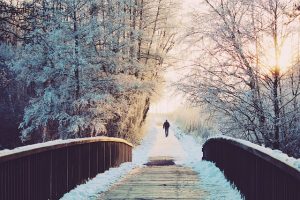
Cold-Related Injuries and Illnesses
When hiking in cold weather, two major health risks to watch out for are frostbite and hypothermia.
Frostbite
Frostbite happens when your skin and the tissue underneath it freeze. It’s most common on fingers, toes, and ears. There are three levels of frostbite: frostnip (the mildest), superficial frostbite, and deep frostbite. It can be hard to tell how serious frostbite is until the skin has thawed.
Signs of Frostbite:
– Skin feels cold, looks pale, and may seem waxy.
– You might experience tingling, numbness, or pain in the affected area.
– Partially frozen skin feels soft, while completely frozen skin feels hard.
– After thawing, blisters may appear with more severe frostbite.
Treating Frostbite:
For frostnip, warm the affected area by covering it up. You can also put cold fingers in your armpits or place cold toes on a partner’s warm belly. Don’t rub the skin or use hot water, as this can cause more damage.
If blisters form, you likely have superficial or deep frostbite, and it’s important to see a doctor right away. Just like with frostnip, avoid hot water and rubbing the area. After thawing, be careful not to let the area refreeze.
Hypothermia
Hypothermia occurs when your body temperature drops below normal. It can happen even when it’s not winter, like during a cold rain or after falling into a cold river. Hypothermia is very dangerous and can be life-threatening.
Signs of Mild Hypothermia:
– Shivering
– Minor clumsiness, like having trouble with zippers
– Slow thinking, confusion, or a change in mood
Signs of Moderate Hypothermia:
– Intense shivering
– Noticeable coordination problems, like stumbling or falling
– Significant changes in mental state, such as irritability or forgetfulness
Signs of Severe Hypothermia:
– Shivering might stop because the body is too tired.
– Further confusion or irrational behavior
– Pulse may become hard to detect
Treating Hypothermia:
The first step is to change the hiker’s environment. If possible, get them indoors or away from the source of cold, such as wind or snow. If their clothing is wet, swap it out for dry clothes and make sure they’re well-insulated. Give them food and water to help them produce more heat by shivering.
Hikers with mild hypothermia might recover and continue their hike, but those with moderate or severe hypothermia need to be treated and evacuated immediately.
Preventing Frostbite and Hypothermia
To stay safe, follow these tips:
Stay warm: It’s easier to maintain warmth than to warm up after getting cold. Dress appropriately to keep your body temperature steady.
Don’t tough it out: If you start feeling cold in your fingers or toes, stop and warm them up. Use hand warmers or body heat to help.
Watch your friends: Keep an eye on your hiking buddies. If you notice pale spots on their face or if they seem clumsy, make sure they stop to warm up or add another layer of clothing.
Safety Tips for Winter Hiking
Safety is our top priority because it helps ensure that you, your friends, and everyone else can enjoy the outdoors with fewer worries. When hiking in the snow, starting with a solid safety plan is essential. Here are some important tips:
Consider Everyone’s Abilities: If you’re hiking in a group, make your plan based on the least experienced or able person.
Share Your Plan: Always tell someone where you’re going, who you’re with, and when you expect to return.
Prepare for the Unexpected: Be ready for weather that might be worse than what the forecast predicts.
Set Realistic Goals: If you’re new to winter hiking, start with easier trails to build your confidence before tackling more challenging ones.
Know Your Gear: Make sure you’re comfortable using any technical winter hiking gear, like a beacon.
Set a Turnaround Time: Decide on a specific time to start heading back to your car, so you don’t get caught out after dark.

